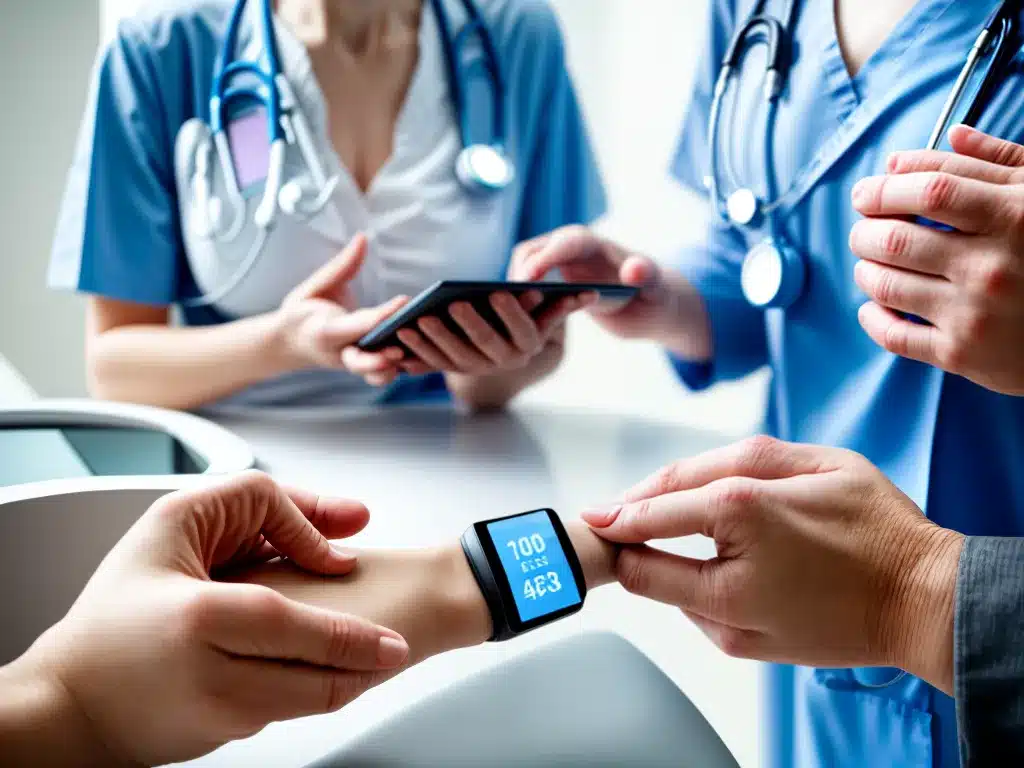
IoT in Healthcare: Wearables, Remote Patient Monitoring and Telehealth
The Internet of Things (IoT) is transforming healthcare in exciting new ways. From wearable devices to remote patient monitoring systems, IoT is enabling more connected, proactive, and personalized care. As a patient myself, I am eager to understand how these technologies can improve my health outcomes and experience.
Wearable Devices
Wearable devices like smartwatches and fitness trackers are becoming increasingly popular for consumers. But these devices also have intriguing medical applications that I am interested in learning more about.
Consumer Wearables for Health Monitoring
Many consumer wearables like the Apple Watch or Fitbit track simple health metrics like heart rate, sleep patterns, activity levels, and more. As a patient, I can use these devices to monitor my overall wellness and alert doctors of any abnormalities. For example, irregular heart rate alerts from a smartwatch could indicate underlying cardiac issues. Wearables empower me to take charge of my health data and share meaningful insights with clinicians.
Clinical-Grade Wearables
There are also clinical-grade wearables specifically designed for medical use cases. These devices go beyond basic fitness tracking to provide doctors continuous monitoring of chronic conditions. For instance, a patch-like sensor worn on the chest can wirelessly track arrhythmia, sleep apnea, blood oxygen levels, and more in cardiac patients. As a patient, I may be asked to wear these medically accurate devices for diagnostic purposes or long-term monitoring of disease progression. The data provides doctors invaluable insights into my condition outside clinical settings.
Remote Patient Monitoring
Remote patient monitoring (RPM) is an IoT healthcare model that allows providers to track patients’ health status outside traditional clinical environments. As a patient with chronic conditions, I stand to benefit greatly from RPM systems.
RPM for Chronic Disease Management
For patients like myself managing long-term illnesses, RPM helps doctors monitor symptoms and vitals remotely. Patients can use RPM devices at home to record health metrics like blood pressure, blood glucose levels, weight, etc. and transmit data back to providers. This allows for early intervention if abnormal vitals indicate my condition is deteriorating. RPM gives me greater control in preventing avoidable hospital visits due to worsening illness.
Post-Discharge RPM
Another promising use of RPM is for monitoring patients recovering from major medical events like surgery or childbirth. After being discharged from the hospital, patients are outfitted with wireless RPM devices to track vitals and watch for potential complications. If warning signs arise, clinicians can immediately intervene and bring patients in for treatment if necessary. As a patient, RPM gives me much-needed peace of mind that my provider will quickly detect and address any post-discharge issues before they escalate.
Telehealth
Telehealth allows patients like myself to consult doctors through digital and online methods like video conferencing. Expanding access to care beyond in-person visits, telehealth opens up tremendous possibilities for convenient, proactive treatment.
Virtual Doctor Visits
The most straightforward telehealth application is virtual consultations with physicians through platforms like Zoom or FaceTime. This allows me to speak face-to-face with my doctor to discuss health concerns, diagnosis, prescriptions, and more from the comfort of my own home. Remote visits means I spend less time commuting to appointments and waiting in clinical lobbies.
Remote Patient Monitoring
Some telehealth platforms integrate remote patient monitoring functionalities. Patients like me can enter RPM data like blood pressure, glucose levels, etc. into our telehealth provider’s software system. Doctors can then access this information to monitor trends and intervene early if any readings are abnormal. Combining RPM and virtual visits delivers seamless end-to-end connected care.
AI-Assisted Triage and Diagnosis
Exciting developments in AI-powered chatbots and symptom checker tools can support telehealth services. If I have a health concern, I can describe my symptoms to an AI agent, which can then ask clarifying questions and provide triage recommendations on whether I need to see a doctor urgently. For minor conditions, AI can potentially offer preliminary diagnosis and treatment as well. These innovations maximize the potential of telehealth.
The influx of IoT solutions heralds tremendous opportunities to enhance patient outcomes, care delivery, and clinical workflows. As these technologies evolve, I am optimistic of their ability to address healthcare’s most pressing challenges through connected, intelligent care. The future looks bright for transforming the patient experience through wearables, remote monitoring, telehealth and more.












